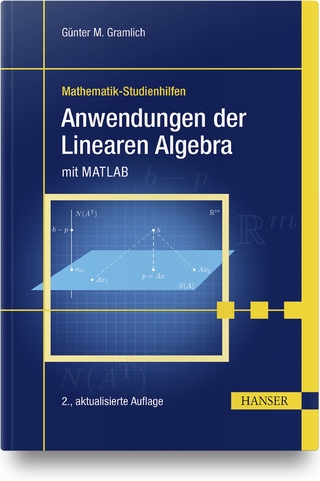
Communication Systems Modeling and Simulation using MATLAB and Simulink
Crc Press Inc (Verlag)
978-1-4398-8190-3 (ISBN)
K.C. Raveendranathan obtained his BSc (Engg.) in electronics and communications engineering with distinction from the College of Engineering Thiruvananthapuram (CET), in 1984. He worked in Bharat Electronics Limited, Bangalore, from 1985 to 1988, where he was involved in the design and development of MW transmitters for Prasar Bharathi. His first book, 1/0 Solutions to Everyday Problems in Science and Engineering, a philosophical work published in the late 1980s, was well accepted by academia. He joined CET in June 1988 as a lecturer in electronics and communication engineering. He obtained his masters in engineering (ME) from the Indian Institute of Science, Bangalore in 1993, specializing in optical/computer communications. Presently, he is working as a professor at the Government Engineering College Barton Hill, Thiruvananthapuram. He has presented/published over 15 papers in national and international conferences and journals and guided over a dozen UG projects and seven M.Tech. theses. His research interests include digital signal processing, wireless communication, fuzzy logic, next-generation computing and simulation techniques. He is a life member of ISTE, life fellow of IE (India) and IETE, and a senior member of the IEEE.
Introduction to Systems, Models and Simulations. Systems Simulation: The Shortest Route to Applications. Modelling and Simulation. Types of Simulations. Discrete Event Systems (DES). Determination of Time to Reach Steady State. Determination of the Desirable Number of Trials. Selection of Simulation Software. High Performance Simulation Tools. Conclusion. Further Reading. Introduction to Programming in MATLAB. Introduction to MATLAB. Basic Features of MATLAB. Notation, Syntax, and Operations. Importing and Exporting Information. Elements of MATLAB Programming. Plotting with MATLAB. Specific Features of MATLAB. Special MATLAB Functions. Getting MATLAB Help Online. Generating Executable Files in MATLAB. Compiling and Calling External files from MATLAB. Calling MATLAB Objects from External Programs. Using Java Classes in MATLAB. The MATLAB GUIDE. Writing Efficient MATLAB Code. MATLAB Clones. Parallel MATLAB. Conclusion. Further Reading. Problems. Simulink. Simulink as a Tool for Model-Based Design. Invoking Simulink. Concept of Signal and Logic Flow. Creating Sub-systems in Simulink. Conclusion. Further Reading. Problems. Simulation of Signals and Systems. Continuous Time and Discrete Time Signals. Periodic Signals and Sequences. Even and Odd Signals. Elementary Signals. Basic Properties of Systems. Linear Time Invariant Systems. The Fourier Series Representation. Fourier Transform of Aperiodic Signals. The Discrete Time Fourier Transform (DTFT). Nyquist–Shannon Sampling Theorem. Signal Reconstruction. The Bilateral Laplace Transform. Analysis of LTI Systems Using Laplace Transforms. The z-Transform. Analysis of LTI Systems Using z-Transforms. The Discrete Fourier Transform (DFT). Conclusion. Further Reading. Problems. Simulation of Analog Modulation Systems. Introduction.Mathematical Model of AM. Simulation of Amplitude Modulation. Simulation of Other Variants of AM. Frequency Spectra. Demodulation of Amplitude Modulation. Noise Performance. Measurement of Noise Performance. Conclusion.
| Erscheint lt. Verlag | 10.10.2011 |
|---|---|
| Zusatzinfo | 50 Illustrations, black and white |
| Verlagsort | Bosa Roca |
| Sprache | englisch |
| Maße | 184 x 241 mm |
| Gewicht | 1043 g |
| Themenwelt | Mathematik / Informatik ► Mathematik ► Algebra |
| Mathematik / Informatik ► Mathematik ► Angewandte Mathematik | |
| Technik ► Elektrotechnik / Energietechnik | |
| Technik ► Nachrichtentechnik | |
| Technik ► Umwelttechnik / Biotechnologie | |
| ISBN-10 | 1-4398-8190-1 / 1439881901 |
| ISBN-13 | 978-1-4398-8190-3 / 9781439881903 |
| Zustand | Neuware |
| Haben Sie eine Frage zum Produkt? |
aus dem Bereich


